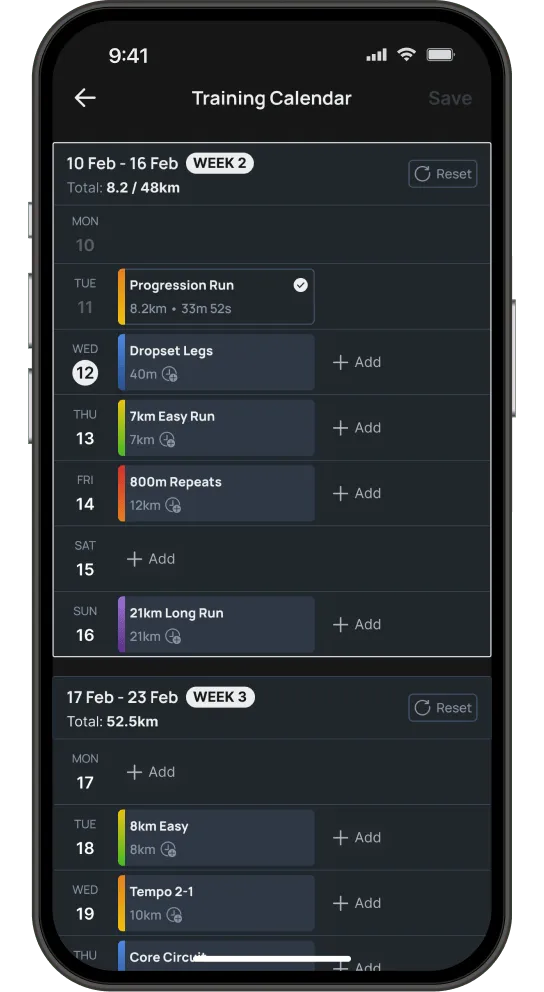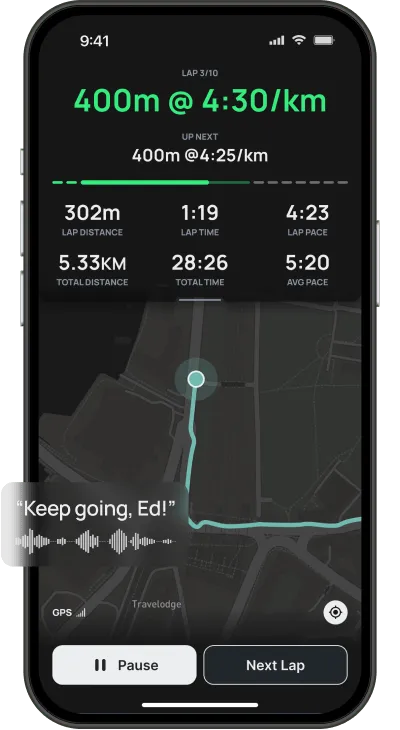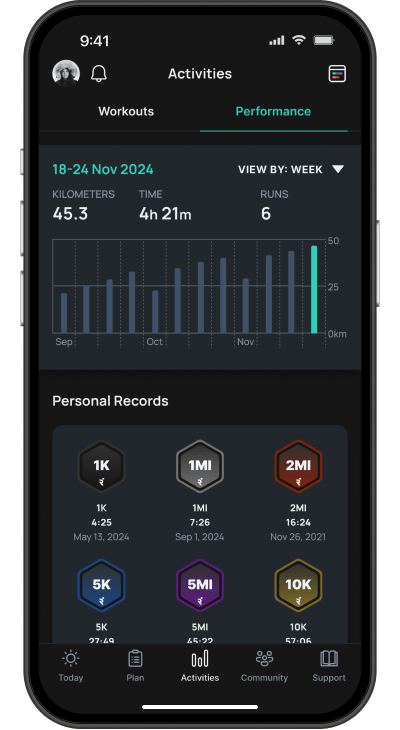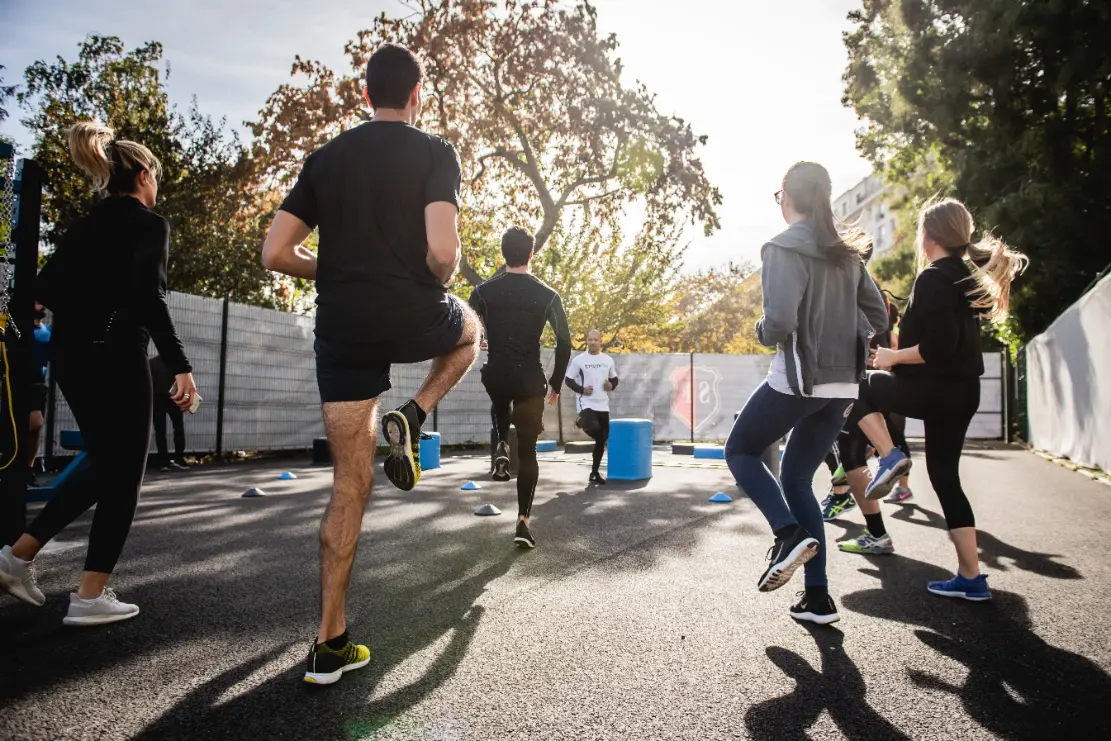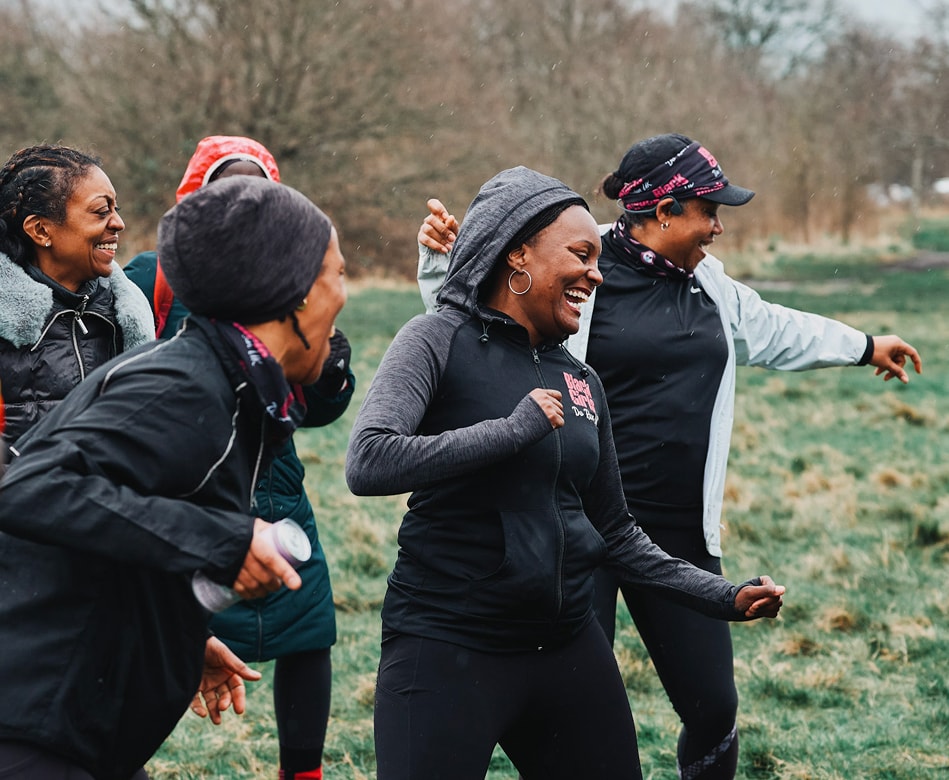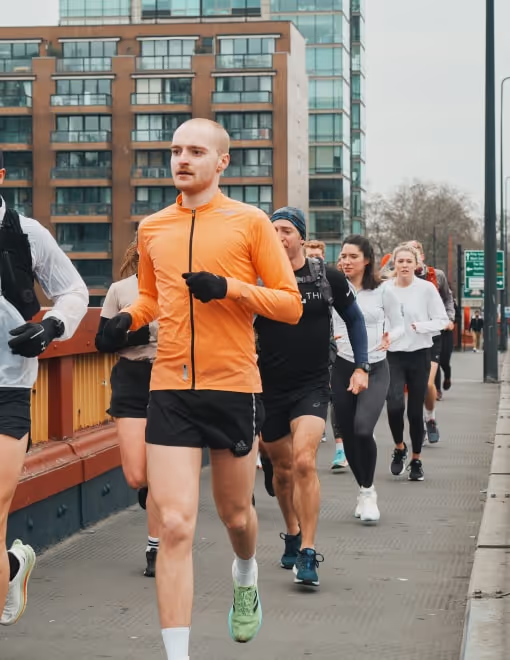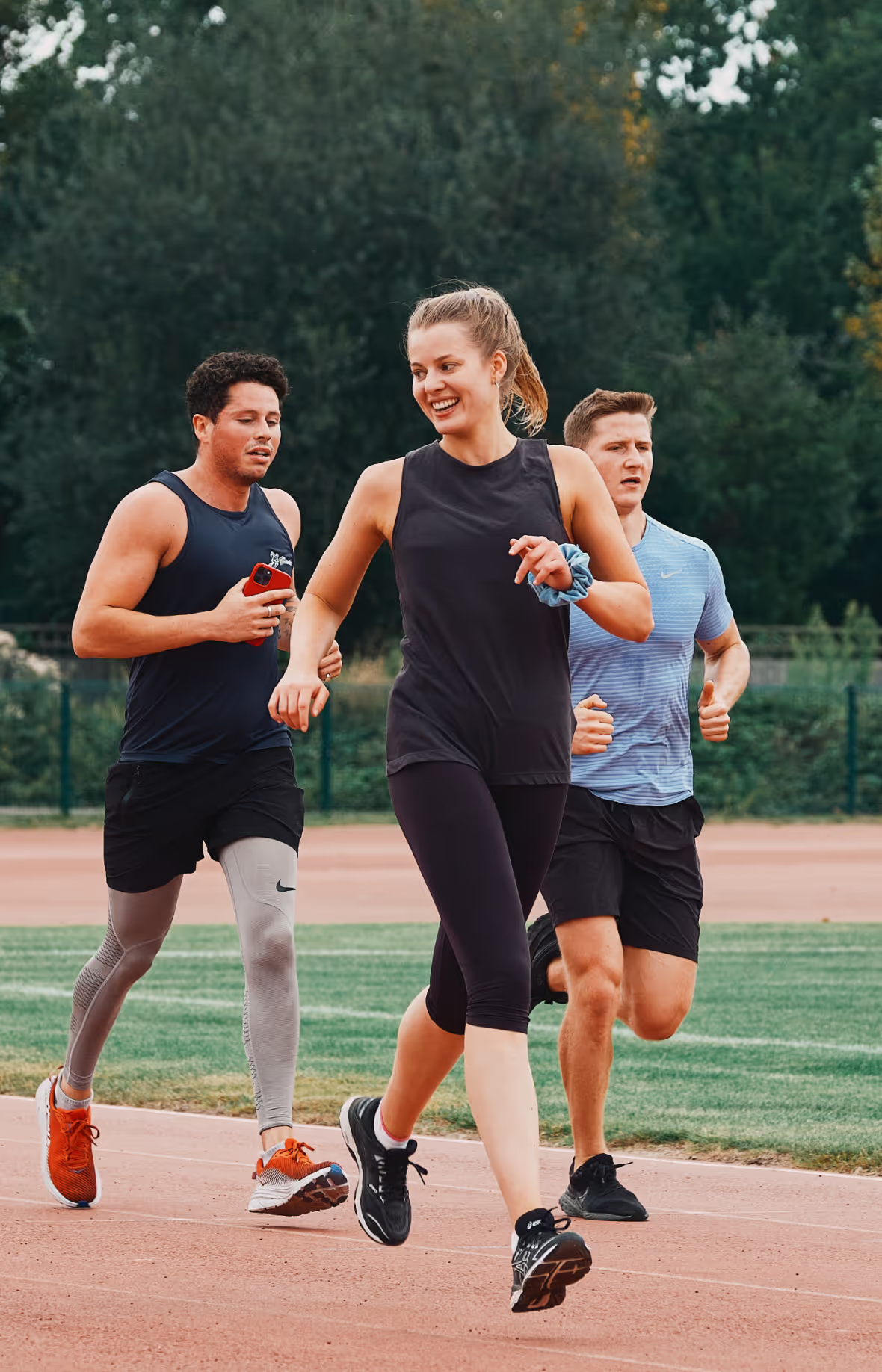Free Training Plans
Starting your running journey should feel exciting, not daunting. With Runna’s free Couch to 5k plans, we’ll take you from your very first step to running 5k with confidence. No stress, no confusion - just a clear plan built around you.
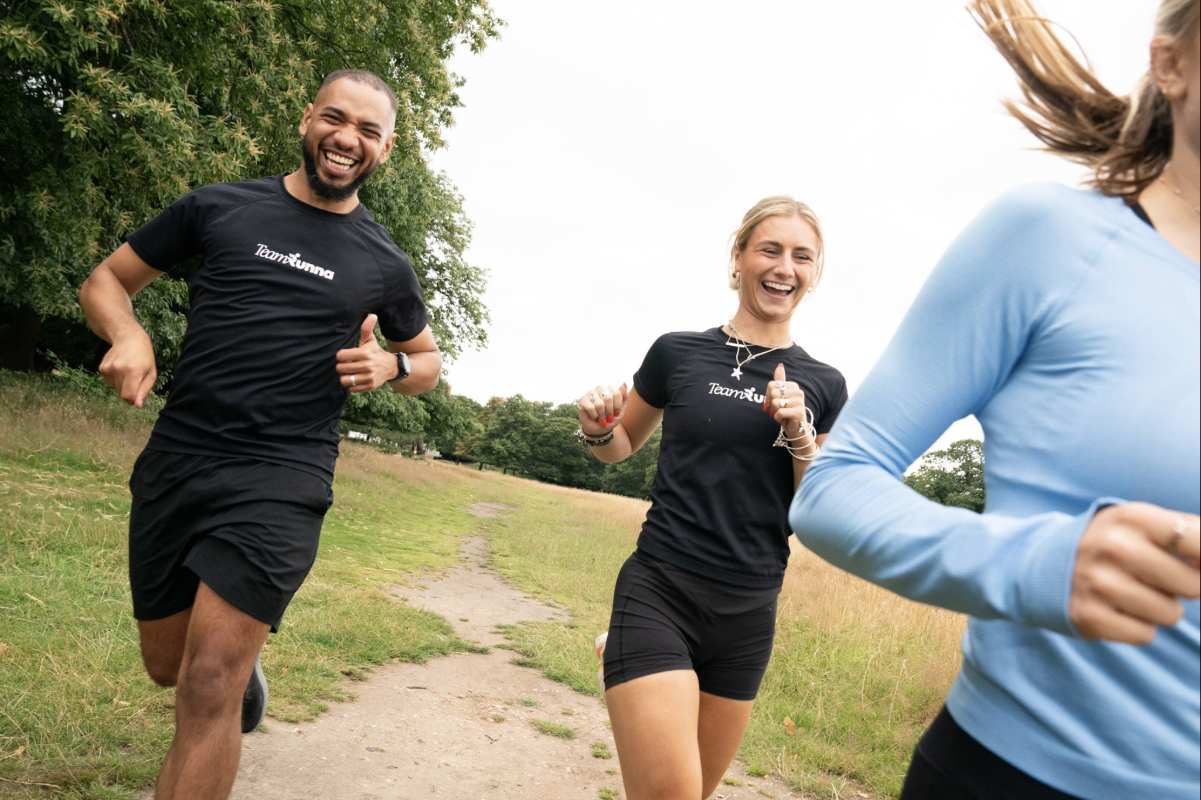
How to start running
If you’re new to running or coming back after time away, the Couch to 5k is the perfect place to start. It’s one of the most popular and effective ways to begin - gradual, achievable, and designed for absolutely anyone, no matter your fitness level.
The method is simple but powerful: start with short bursts of running, balanced with walking, so your body adapts without feeling overwhelmed. Each week, the walking eases off, the running builds up, and before you know it, 5k feels within reach.
Why it works:
• Progressive: You build up in small steps, never more than you can handle.
• Protective: Walking breaks reduce impact, helping you stay consistent and injury-free.
• Confidence-boosting: Every milestone proves you’re capable and keeps motivation high.
The real secret is consistency. Scheduling your runs, finding a buddy or group, or setting a 5k goal on the horizon makes the journey more enjoyable and sustainable.
With Runna, you’ll have a personalized Couch to 5k plan tailored to your lifestyle, fitness, and goals. Press "Go", follow the sessions, and we’ll take care of the rest - guiding you step by step until you’re running 5k with confidence.

Why choose our free Couch to 5k training plan?
No matter your starting point, we’ll give you everything you need to reach 5k with confidence.
How to get started
No confusion, no pressure. Runna gives you a clear path from day one to 5k, with all the guidance and support you need along the way.
Choose your plan
Share your current fitness level, and we’ll create a Couch to 5k plan that adapts to your fitness and schedule.
Download the app
Download the app, log in, and you’ll have your full training plan - complete with runs, tips, and guidance - at your fingertips.
Run, run, run!
Simply tap ‘Go’ and follow along. Every run is laid out clearly, so you always know exactly what to do.
Hit that goal
Stick with your plan and you’ll smash 5k feeling confident, proud and ready for whatever comes next.
Workouts explained
Your Couch to 5k training includes a mix of sessions - each with a clear purpose. Here’s what they are and how they’ll help you on race day.
Tips for your Couch to 5k training plan
These expert-backed tips will help you train smarter, avoid injury, and stay motivated. From pacing and recovery to gear and mindset, discover just a small snippet of all the tips, nutrition and coaching advice you'll have at your fingertips with a Runna training plan.
Nutrition
Training is only part of the equation - what you eat has a big impact on how you feel and perform. Good fueling makes sessions feel easier, helps you bounce back, and keeps your energy steady.
- Keep protein high to support muscle repair.
- Eat extra carbs before tougher runs or workouts.
- Try caffeine in training if you want an extra boost in speed or focus.
Focus on complex carbs like oats, quinoa, whole grains, sweet potatoes, fruit, and vegetables for steady energy. Avoid relying on lots of sugar, which can lead to spikes and crashes. And remember: the harder or longer your training, the more fuel your body needs - so adjust intake to match intensity and mileage.
Race day nutrition
On the morning of your 5k, keep things simple and familiar.
- Eat a light, carb-rich meal 2–3 hours before the start.
- Go easy on protein, fat, and fiber so digestion doesn’t slow you down.
- Stick with foods you’ve practiced with in training - nothing new on the day.
Tip: A light carb snack closer to the start (like half a banana) can also help, but only if you’ve tested it beforehand.
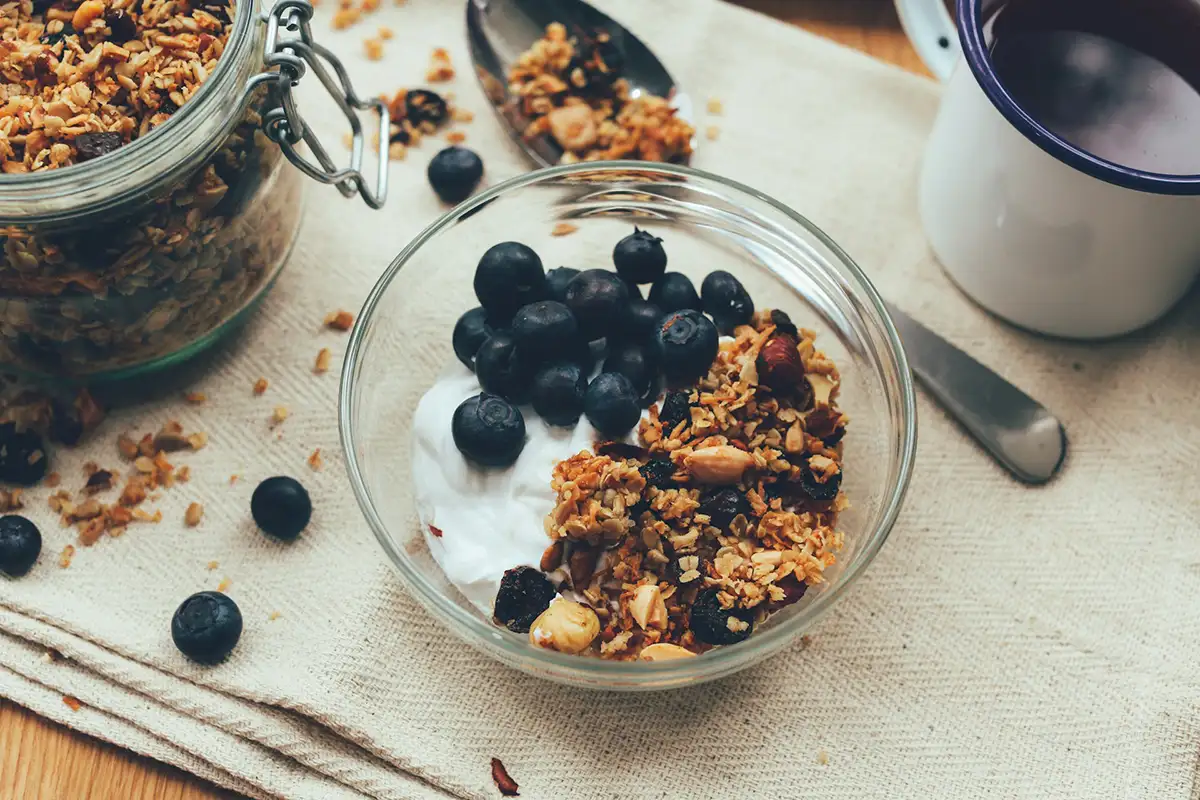
Cross-training and strength training
Adding strength alongside your Couch to 5k program keeps your body resilient and helps you progress with confidence. It strengthens the muscles that absorb impact, improves balance, and lowers the risk of injury as your mileage builds.
Cross-training is any activity that builds fitness without the same impact as running. Cycling, swimming, rowing, or using the elliptical are all great options. These workouts keep your aerobic engine strong while reducing stress on your legs. They’re also a useful way to stay active if you’re carrying a niggle, or if you want to add variety to your week. Choosing something you enjoy makes it easier to stay consistent.
Strength training is a powerful tool even for beginners. Focus on simple bodyweight exercises like squats, lunges, bridges, and planks to build strength in your calves, quads, hamstrings, glutes, and core. These muscles protect your joints and make running feel smoother and easier.
Even 1–2 short strength sessions per week can make a big difference. With Runna, we will integrate a personalized strength plan to your program, tailored to your schedule, equipment, and current level.
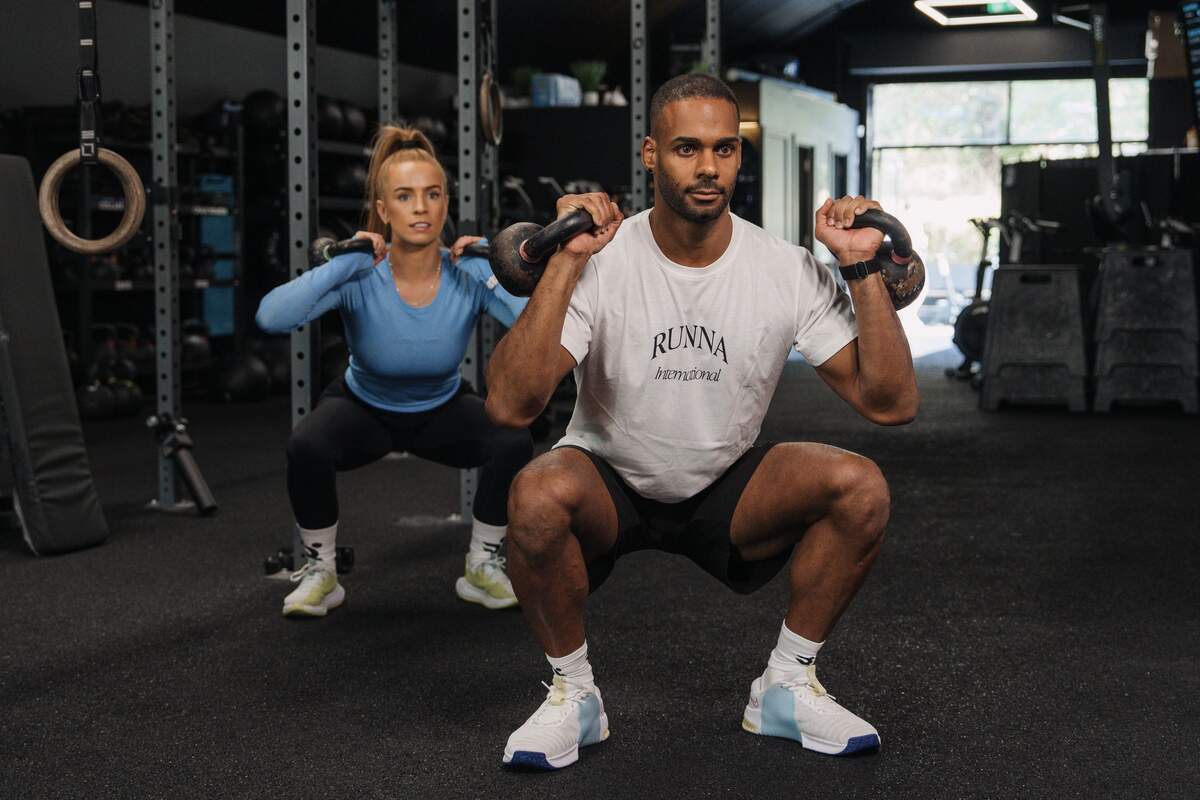
Pacing
When you’re starting out, pacing isn’t about numbers on a watch - it’s about effort. The Couch to 5k program is built around walk-run intervals that let your body adapt gradually.
- Early weeks: Short bursts of running broken up with plenty of walking for recovery.
- Middle weeks: The balance shifts - longer runs, shorter walks - as endurance builds.
- Later weeks: You’ll move toward continuous running, learning to hold a steady, conversational pace.
A good rule of thumb is the “talk test”: you should be able to hold a light conversation during most of your runs. That means you’re running at the right effort - easy enough to complete the session, but challenging enough to make progress.
Remember: Think of pacing in this phase as learning control. The goal isn’t to run fast, it’s to run consistently. Once you can complete a 5k without walking, then you’ll be ready to start working on speed.
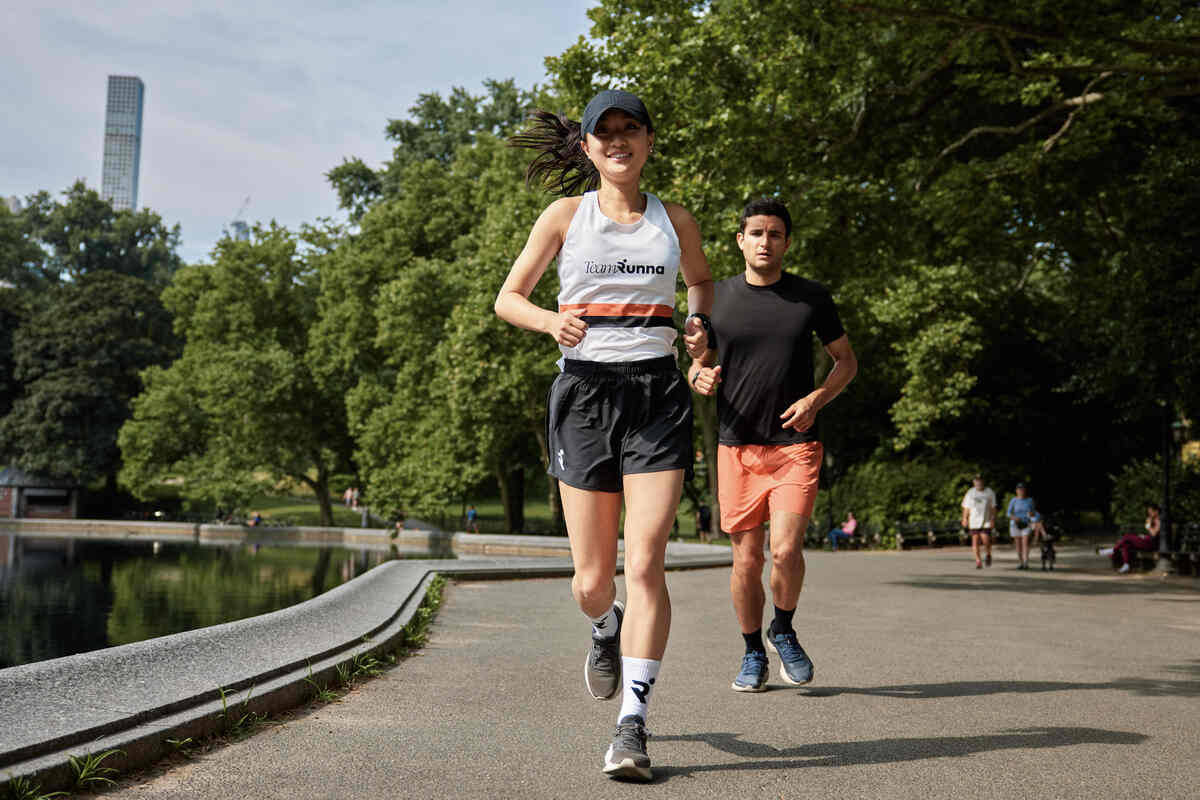
Form
Form matters even at the very beginning. Your running form is important for a few reasons - running efficiently will:
- Protect your body from impact with the ground, even at faster speeds.
- Reduce the energy cost of running so you can maintain pace for longer.
- Lower your risk of injury, especially when training with speed sessions.
At this stage, it’s not about perfect mechanics - it’s about building good habits early.
- Run tall with relaxed shoulders, keeping your chest open for easier breathing.
- Keep strides short, light, and controlled - avoid overstriding.
- Let your arms swing naturally by your sides to help with rhythm.
- Stay relaxed through your hands, jaw, and face to avoid wasting energy.
Practice form during walk-run intervals so it becomes second nature as running sections get longer. You don’t need big changes - just small, steady improvements that help you run comfortably and safely.
Tip: Think of form as a foundation - get it right early and it will support every step as you build towards 5k.

Recovery
Recovery is what helps you stay consistent, avoid injuries, and keep progressing as you move from walking to running 5k.
Here are the key things to focus on:
- Sleep: Aim for 7–9 hours each night. Quality sleep is when your body repairs and adapts — crucial when you’re building new habits.
- Mobility work: Add yoga, Pilates, or stretching into your week to loosen stiffness and improve flexibility as your body adjusts to running.
- Massage and tools: A foam roller, massage gun, or even gentle stretching can ease sore muscles and speed up recovery.
- Nutrition and hydration: Refuel after runs with carbs and protein to repair muscles and restore energy. Stay hydrated throughout the day, not just around workouts.
- Active recovery: Light walking, cycling, or swimming keeps blood flowing and muscles loose without adding more stress.
- Flexibility: Listen to your body. If you’re unusually tired or sore, swap a run for a rest day. Missing one session won’t stop your progress, but pushing through fatigue can set you back.
Remember: recovery is part of training. The more consistent you are with rest and self-care, the smoother your journey to 5k will feel.

Gear
The right gear makes running more comfortable and enjoyable, especially when you’re just starting out. Here’s what to focus on for Couch to 5k:
- Shoes: Your shoes are the most important investment. Get a pair that supports your stride and cushions impact - ideally fitted at a running store. Worn-out trainers can increase your risk of injury, so don’t rely on old gym shoes.
- Clothing: Choose breathable, technical fabrics (like polyester or nylon blends) that wick sweat and reduce chafing. Avoid cotton, which holds moisture and can make runs uncomfortable.
- Running watch or GPS tracker: You don’t need advanced gear to start, but tracking pace, distance, and time helps you see progress. Runna syncs with Garmin, Apple Watch, COROS, and Strava for seamless tracking.
- Accessories: A lightweight belt, armband, or simple pockets in your gear can carry essentials like keys or your phone.
- Sun protection: Use a high-SPF sunscreen, even on cloudy days, since most runs will be outdoors.
Remember: try everything in training first. Don’t wear brand-new shoes, bras, or clothing for your 5k event - make sure your gear is tested and comfortable so you can focus purely on running.
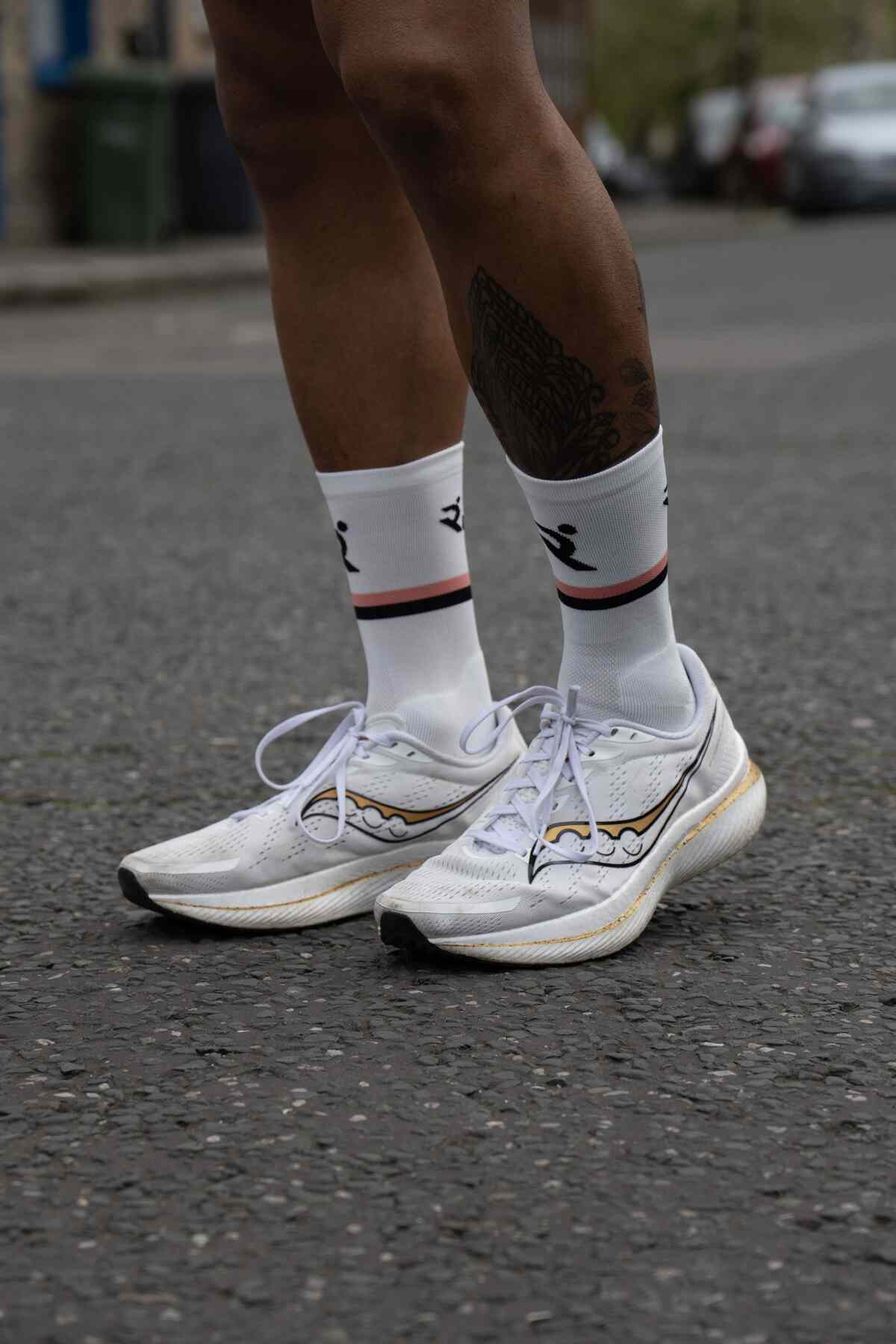
As featured in




Stories from Runnas
FAQs: All you need to know about Couch to 5k
5k distance: how long is a 5k in miles?
A 5k is 5 kilometers, which is approximately 3.1 miles.
How long will it take me to run a 5k without walking breaks?
If you’ve never run before, building up your endurance towards a 5k distance usually takes anywhere from 6 to 12 weeks.
One of the best ways to achieve this is to use our new-to-running plan, which is 8 weeks long and will help you gradually improve your running ability with walking and running sessions towards running a 5k in one go.
What 5k time should I aim for?
If you’re a complete beginner or recovering after a long break from running, aiming to run 5 kilometers is already a fantastic goal!
Once you get to running 5k in under 60 minutes, you can use one of our faster 5k plans to improve your running performance.
5k training and injuries: What should I do if I'm recovering from an injury?
If you’re recovering from an injury, running-related or not, you need to take it slow and listen to your body. Consult with your doctor before you start running to discuss a timeline for returning to running.
Once you get their green light, you can do a 1-minute jog test and a 30-seconds hop test to see whether you get any pain. Then, once you’re ready for your first run, go for a 10-minute test run broken down into 2-minute intervals to see how you feel.
Read more about post-injury training.
If you’re experiencing knee pain after running, this is often not related to any trauma or specific injury, but might instead be an indicator of poor running technique or simply having set a weekly mileage goal that’s too ambitious.
Find out how to manage a runner's knee safely and efficiently.
How can I improve my 5k time?
If you’re able to run 5 kilometers in under 60 minutes, you can start working on improving your 5k time with a personalized faster 5k training plan. Runna’s plans use different types of runs, such as interval and tempo training, long runs, and speed work, to help you gradually improve your performance and 5k finishing time.
Running and general fitness: Do I need to do strength training to run?
Strength training is not a must, but it’s a great addition to any runner’s training program. It can help you improve your running economy, making you a faster and stronger runner, and also reduce your risk of injury. Win-win, right?
With Runna, you can seamlessly add customized strength training sessions into your running plans.
What's the first running goal I should aim for as a beginner?
If you’re new to running, aiming to run a 5k in under 60 minutes or without stopping to walk is a fantastic goal to get started.
With it, you can set a healthy foundation of a (hopefully!) lifelong habit of running where you progressively improve your running performance and set new goals as you go.
Then, you can start training for your first 5k race with one of our faster 5k running programs.
With Runna, you can get a personalized running plan to help you achieve any goal, regardless of your current level.
Inspiration

The Ultimate 5k Training Guide
All the training tips you need to level up your 5k running journey, from mileage to training types.

How to Improve Your Running Form
Want to run efficiently and reduce your chance of injury? Here are our top tips on how to nail your running form and run stronger!

5k & 10k checklist: All the essentials for a smooth race
Ready for your next 5k or 10k race? Make sure you have all the essentials you need to bring to the start line with you for a smooth race – and get ready to set a new PR!

